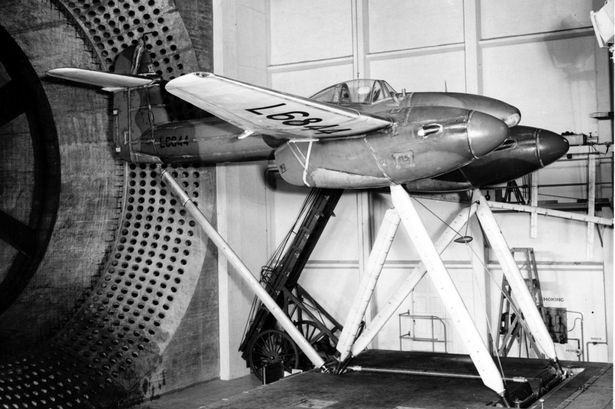During the Second World War, secret wind tunnels helped the British test new planes. Even as early as WWI, military planes were tested at the airfield in Hampshire, as were several cars including the Aston Martin. Testing was not limited to vehicles, but as also extended to telegraphs and parachutes as well as flora and architectural structures. The Farnborough airfield’s secret wind tunnels were incredibly versatile in terms of use.
The passageways worked with the assistance of a giant turbine at the end of a hangar measuring four hundred feet in length. As the six fan blades rotate, they provided torrents of air that traveled down the hangar at hundreds of miles per hour. These wind tunnels allowed researchers to observe an aircraft or other vehicle in motion while the vehicle actually remained stationary. In terms of flora and architectural structures, these air torrents gave scientists an idea of stability to ensure security in the case of inclement weather.
All manner of important British military aircraft were first tested in these hangars. Such planes included the Concorde, the Hurricane and the Spitfire. Other uses such as Rolls-Royces and architectural structures were not prominent until much later. One of the rarer uses for the wind tunnels involves testing the drag of Olympic-level skiers. These secret testing hangars have existed for some time, with the first of their kind being created in 1916 when the First World War was still well underway. This helped the British to perform tests on fighter planes that aided the fight against the notorious Red Baron, the Mirror reports.
While these hangars were once classified, they are now being opened to the public for tours of the sites in which some of the most renowned airplanes from the two World Wars were made. The wind tunnels are now the site of the Wind Tunnel Project, which combines the historical site with modern works of art to provide a unique educational experience for all visitors.
The wind tunnels will only be open for the project until July 20. Visitors will be able to grace the same passageways as men who helped build the technologies that accompanied the brave men of Britain into battle during the World Wars. Researchers might not have made many of the advancements in aircraft technology that they were able to make if not for the unique advantage provided by testing in the wind tunnels at the Farnborough airfield.
